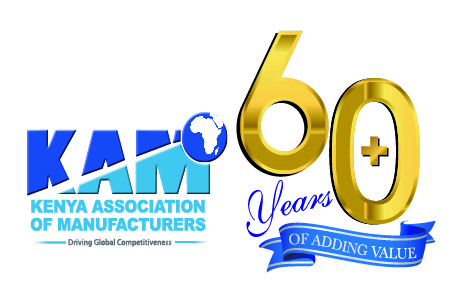Leveraging AI for Kenya’s Industrial Development
By Tobias Alando
As the world edges deeper into the digital age, few innovations hold as much transformative potential as Artificial Intelligence (AI). A recent report from McKinsey suggests that AI could add $13 trillion to global economic output by 2030. With its burgeoning tech landscape and forward-thinking industrial policies, Kenya stands at the cusp of an industrial revolution where AI could redefine its manufacturing and industrial sectors.
Kenya’s industrial and manufacturing sectors are undoubtedly ripe for disruption, and AI is poised to catalyze this change. The integration of AI technologies can elevate efficiency and productivity in ways that were unimaginable a decade ago. For instance, predictive maintenance allows manufacturers to foresee machinery failures before they happen, minimizing downtime and improving overall equipment efficiency.
Additionally, incorporating AI-driven quality control systems can ensure consistently high standards in manufacturing. AI can detect defects with greater precision than human inspectors, providing real-time feedback that can prevent defective products from reaching the market. This is crucial for Kenya as it looks to expand its exports of manufactured goods; the more competitive Kenyan products are in terms of quality, the easier it will be to access international markets, leading to an industrial boom.
We can all agree that green industrialization is critical as the world confronts the environmental crisis. AI is not just about enhancing efficiency; it is also about making processes more sustainable.
AI systems can identify ways to reduce energy consumption and lower carbon footprints by analyzing data across the production chain. With renewable energy sources—geothermal, wind, and solar—making up over 90% of its electricity generation, Kenya can optimize energy use in industrial processes through AI. By adjusting manufacturing schedules to match periods of high renewable energy production or implementing energy-saving algorithms, Kenya can expand its industrial base while maintaining its commitment to environmental sustainability.
Concerns about AI’s impact on jobs are often raised. While some low-skill jobs may be replaced, AI also opens new avenues for employment. Kenya can become a hub for AI talent, creating thousands of jobs in AI programming, machine learning, and robotics. The nature of work in the manufacturing sector will shift, decreasing the demand for repetitive tasks while increasing the need for human creativity, problem-solving, and oversight. Therefore, investing in upskilling the workforce is essential—by doing so, Kenya will not only secure jobs but also cultivate a generation of tech-savvy workers capable of leveraging AI to solve industrial challenges in real-time.
Moreover, AI will significantly elevate Kenya’s competitiveness on the global stage. With AI-driven manufacturing, Kenya could reduce production costs while increasing the speed and precision of its output, enabling it to compete with countries like China and India, which have traditionally dominated the global manufacturing market.
To fully harness the power of AI, there must be stronger collaboration among Kenyan research institutions, tech startups, and the manufacturing industry. Tailor-made innovations that meet the specific needs of Kenyan manufacturers will be crucial for AI solutions. Government policies must also support AI research and innovation. Incentivizing private-public partnerships that invest in AI solutions will be essential to driving AI adoption across Kenya’s industrial landscape. This requires targeted policies that promote innovation, support startups, and encourage international tech firms to set up Research and Development hubs within Kenya.
As Kenya embarks on this journey of industrialization, the marriage between AI and green industrialization offers an unparalleled opportunity to fast-track development. However, to leverage AI effectively, several key steps must be taken. First is policy development. The Kenyan government needs to formulate policies that foster AI adoption across sectors, providing incentives for manufacturers to incorporate AI into their operations. Second is infrastructure Investment. Robust technological infrastructure—fast internet, cloud computing, and data centers—is essential.
Continued investment in these areas will ensure that industries can adopt AI seamlessly. Third is workforce upskilling. Success hinges on equipping Kenya’s workforce with the right skills. Investing in education, particularly in STEM fields and AI-related disciplines, is critical. Fourth is collaboration. Cross-sector collaboration between academia, industry, and government is vital to developing AI solutions that address Kenya’s unique manufacturing challenges.
AI is not just the future of manufacturing—it is the present. With the right investments in policy, infrastructure, and skills, Kenya can become one of the global leaders in AI-powered industrial development. The opportunity to reshape the manufacturing landscape is immense, and if Kenya seizes it, it will not only accelerate industrial growth but also cement its position as a beacon of innovation and sustainability in Africa.
The writer is the Chief Executive of Kenya Association of Manufacturers and can be reached at ceo@kam.co.ke.
Looking for elevation? KAM lifts you up.
- Direct technical assistance
- Capacity building programmes
- Networking and mentorship
- Industry insights & analysis
- Trade & export development services
